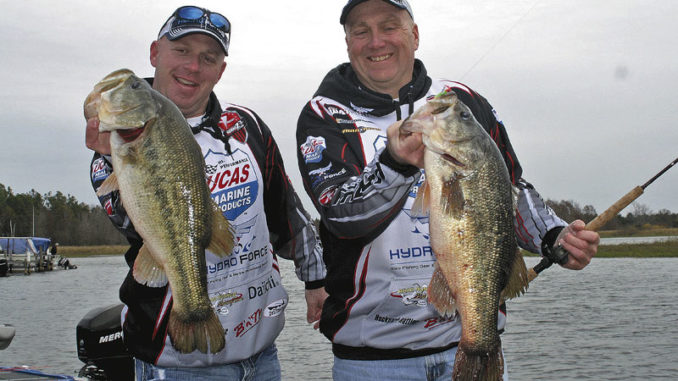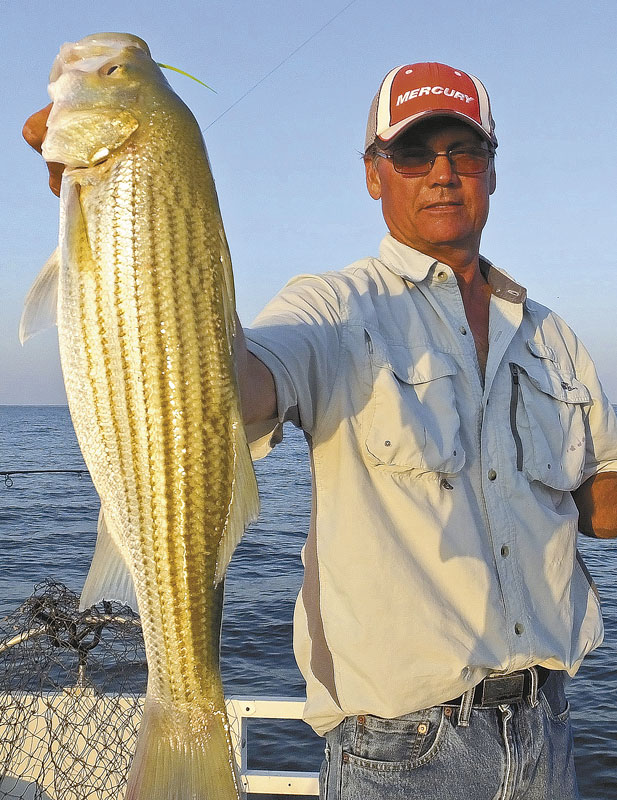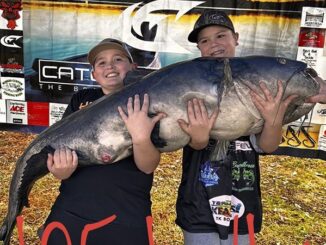
You name it, it’s biting as October, cooler weather arrives
October brings prime-time fishing for multiple species in Lake Marion and Lake Moultrie, headlined with striper season opening after being closed for 3½ months.
But the best bass fishing since spring explodes on the Santee Cooper lakes, with shallow-water schooling action throughout both lakes.
Bass busting bait
Largemouth bass are chasing baitfish in the shallows, and topwater schooling action is red-hot this month. But that’s not the only productive pattern.
Guide Brett Mitchell said while schooling action occurs any time of the day — and he’s always prepared for it — his bread-and-butter tactic is working points and pockets of weeds and aquatic vegetation in shallow water.
“Actually, the diversity of patterns during October is extensive; it’s a matter of figuring out what’s going on in the part of the lake you’re fishing,” said Mitchell (803-379-7029) . “Most all types of lures, from fast-moving topwaters to soft plastics fished slowly, can be productive.”
Mitchell will begin searching for active bass in the shallows around cover. Later, he transitions to slightly deeper water and targets weedy edges, specifically points and pockets, and trees and brush.
“During October, I’ll always be tuned in to breaking fish in open water,” he said. “The window of opportunity can be short and quick reactions will add bass to your catch.”
Crappie, catfish
The fall feeding trend has crappie feeding heartily, and papermouths will begin to stack up on deeper brush and bite more aggressively.
Both Marion and Moultrie are extremely productive, and most guides relate that the improved consistency of finding slabs on these targets is what makes October more productive.
Tight-lining minnows or small jigs at the top of the brush — or along the sides when fish are holding deeper — is a prime tactic, Productive depths range from 15 to 30 feet.
Catfish, including big fish, begin to perk up, too, with blues and flatheads typically on a strong bite.
Drift-fishing is typically the most-productive pattern, but the key to finding plenty of catfish in any given area is having a food source nearby. It can be scads of shad in any depth of water or shallower around mussel beds. Gizzard shad, herring and white perch are all productive baits.

Striper Update
Striper fishing is outstanding this month on both lakes, with schooling action and live-bait fishing productive. Most guides keep plenty of live bait for down-line fishing, because schooling action is good early in the month and becomes more consistent later in the month and into November. Following seagulls is a good tactic to find stripers in October.
The key for fishermen is that both lakes are full of stripers, with plenty in the legal slot-size available for anglers to harvest. And the impact of the most-recent striper regulations appears to bode well for the future of the fishery.
Levi Kaczka, the S.C. Department of Natural Resources’ biologist for the Santee Cooper lakes, said the statistical data for the striper fishery since the regulatory change is excellent, and that changes are having the desired impact.
“The goal of implementing more-conservative harvest regulations was to address total annual mortality, which was estimated to peak around 65% to 70%,” Kaczka said. “Our estimates from the last couple of years have been 43% to 45% annual mortality, which is a good thing because we’re keeping fish in the system longer. We’re also seeing noticeably higher growth rates.”
Growth vs. mortality
Kaczka said the higher growth rates are interesting because mortality and growth rate typically show a direct relationship in systems where fish are being harvested. High mortality equals higher growth rates, and lower mortality equals lower growth rates, but fish live longer and eventually grow larger.
“The theoretical maximum size for a species in a system will be lower for the high-mortality, high-growth situation, and higher for the low-mortality, low-growth situation,” he said.
Kaczka said the opposite is currently occurring for stripers at Santee Cooper: relatively low mortality while producing high growth rates. For anglers, that’s a good thing, but it’s a pattern that will likely eventually level off.
“I suspect this is the dynamics of the population catching up with regulation change,” he said. “A much-higher percentage of our yearly gill-net catch is now susceptible to harvest. Because of what we’re seeing in the data and conversations with anglers, it appears more people are catching limits of stripers. Due to this, I’d suspect to see mortality rates increase, but stabilize well below the pre-regulatory mortality of 65% to 70% since we’re maintaining a 3-fish creel limit. This would create a balance of maintaining the fishery at a high level for fishermen to enjoy while protecting the resource.”





Be the first to comment